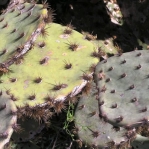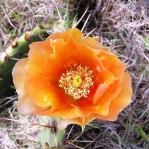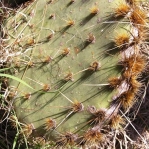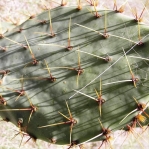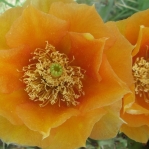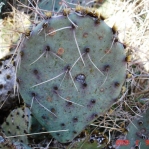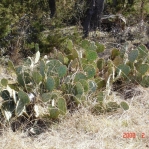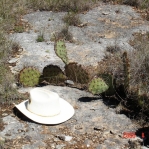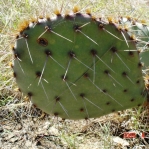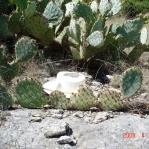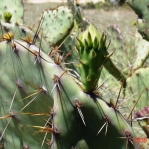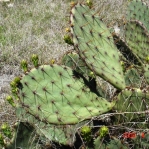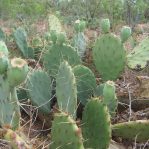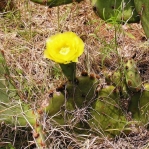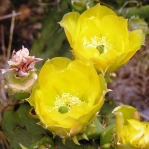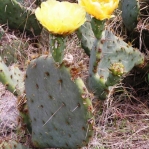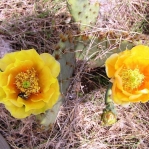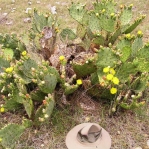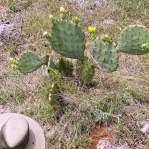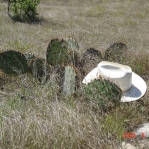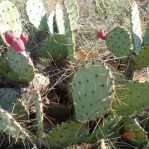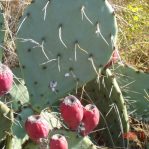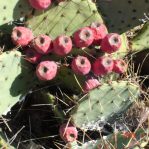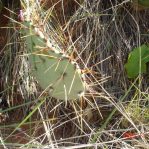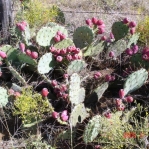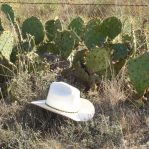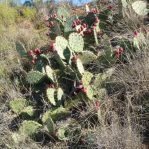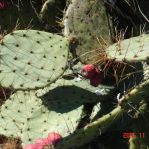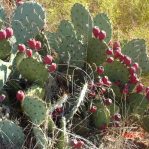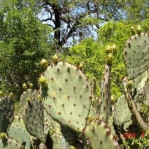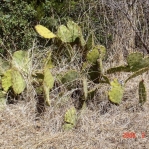
Griffiths, Bulletin of the Torrey Botanical Club 43(2): 90, 1916
Isotype; Isotype; Herbarium; Herbarium; Herbarium; Herbarium (O. griffithsiana); Herbarium (O. griffithsiana); Herbarium (O. reflexa); Herbarium (O. convexa); Painting; Painting (O. convexa)
Original Description
What is Opuntia pyrocarpa?
Opuntia pyrocarpa is a commonly encountered prickly pear cactus in south-central to north-central Texas where it often grows in deep, limestone-derived soils. It is found in Mexico and perhaps Oklahoma, and it may be in other parts of Texas.
Details
O. pyrocarpa is an ascending spreading plant to 1 m tall, but it may be lower. Often the main branches of this prickly pear cactus are prostrate but ascend at the ends. The cladodes are large, approximately 25(30) × 15(20) cm, or they may be smaller in some plants. The cladodes may be constricted at the base to form a short neck, or this feature may be lacking. The spines are porrect in new cladodes, but often slope down with age. Spines are present on the upper 50% to 60% of the areoles and are yellow darkening to a brown base. Spines are 2 to 3 cm long.
The flowers are yellow with light-red centers or pure yellow. This Opuntia has a white style tipped with a light-green stigma. The petals are irregularly cleft or even nearly bifurcated. The fruit is long, pyriform, and various shades of carmine, often with a purplish tinge outside and inside.
Ploidy is unknown.
Other Notes
O. pyrocarpa may form large plants that create piles of cladodes spread over 6-8 feet, making up for lack of height by achieving breadth. Or prostrate ascending branches by reach upwards to 100 cm. Several large plants growing together can create a formidable thicket. The species occurs with others found in Texas such as O. lindheimeri and O. orbiculata. Because it can form a large plant, O. pyrocarpa is confused with O. lindheimeri in parts of Texas even though it is not upright. Also, O. pyrocarpa lacks the characteristic yellow spines of O. lindheimeri. The type location is Marble Falls, Texas.

